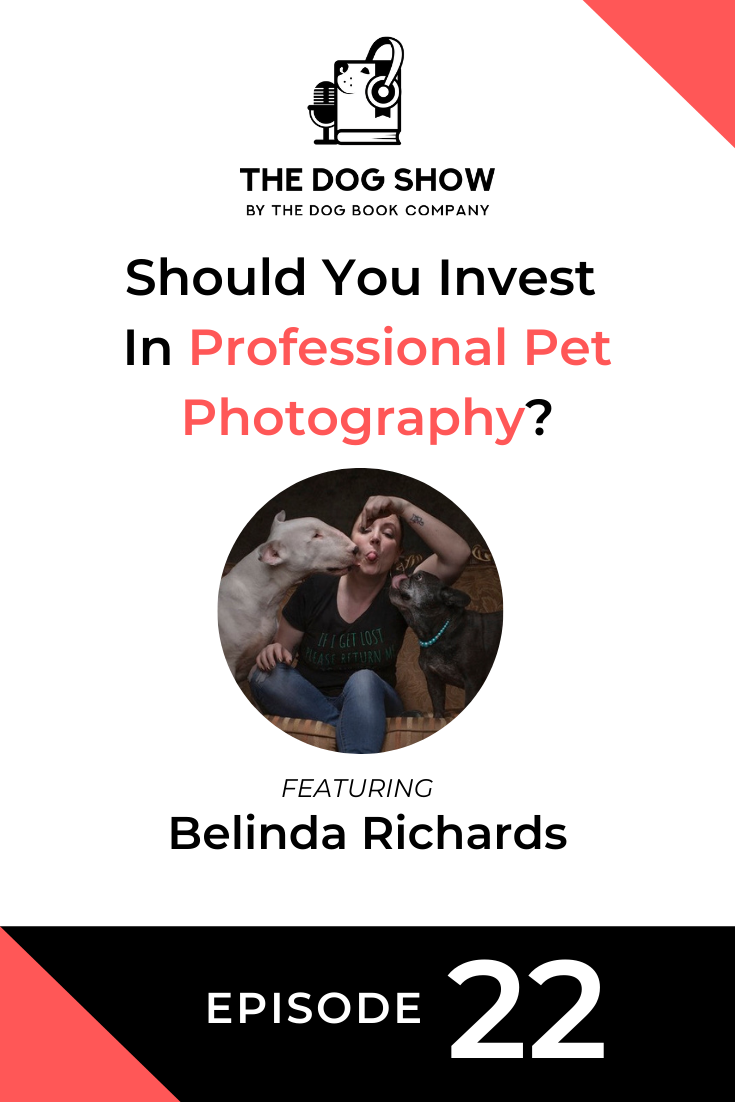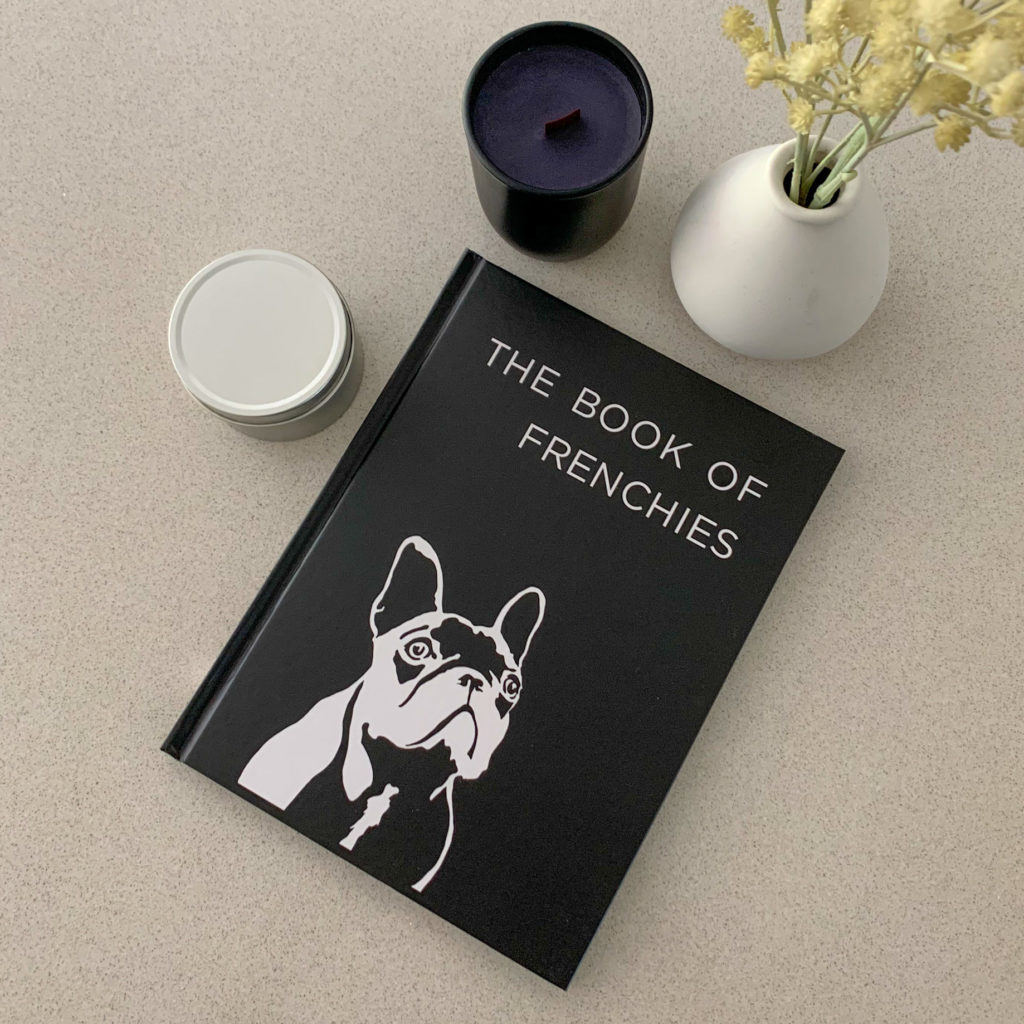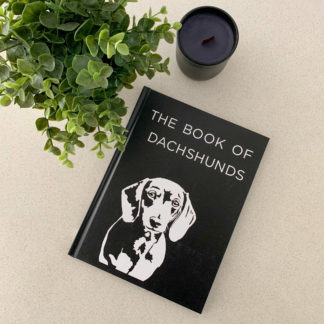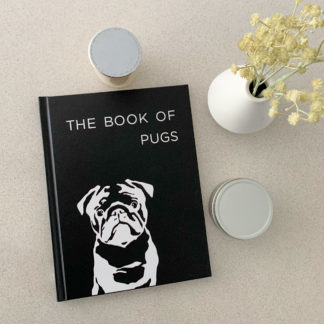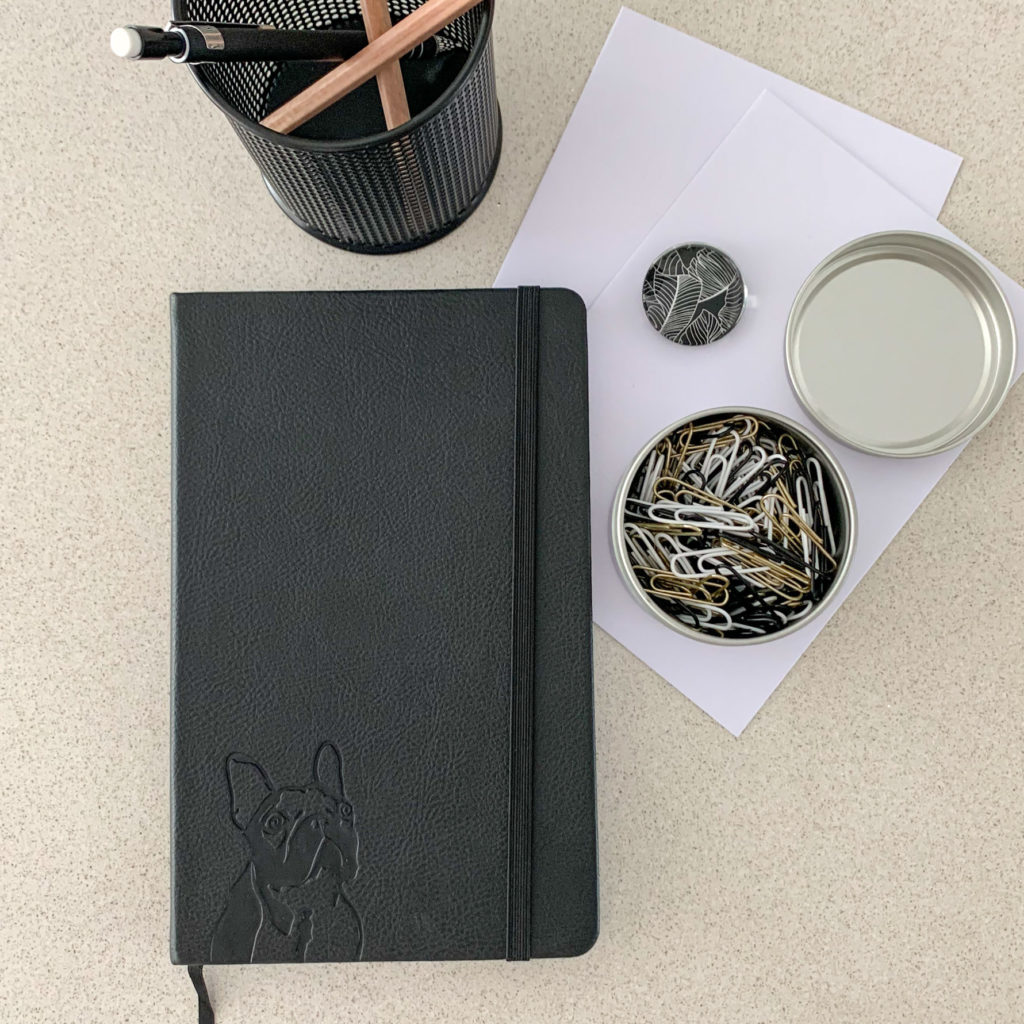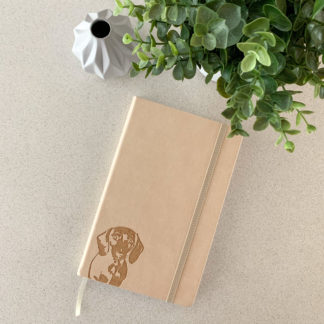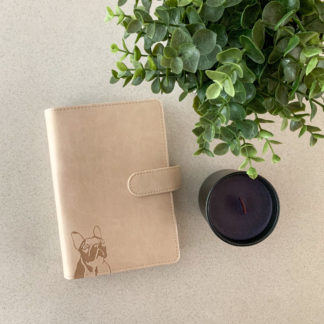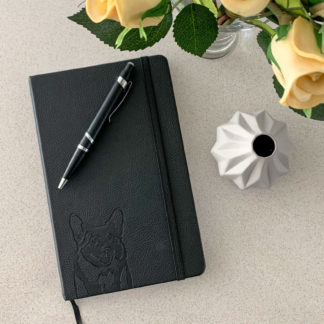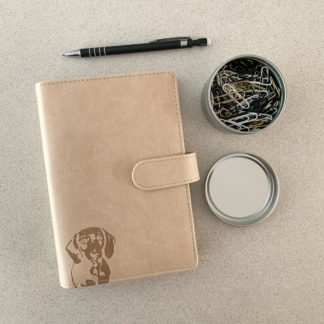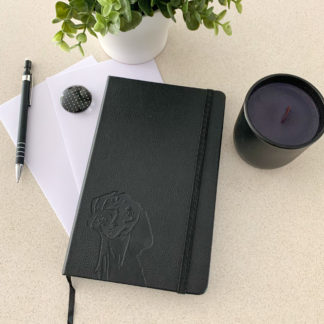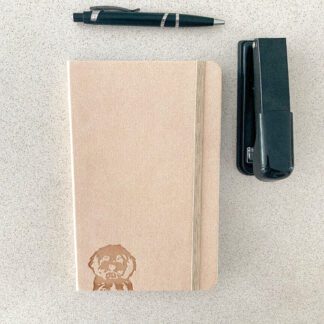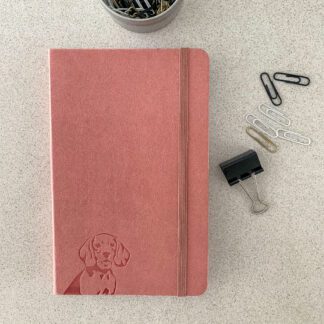
Ever thought about investing in professional pet photography?
This episode of The Dog Show features Belinda Richards. Belinda is the Founder of Frog Dog Studios, a luxury pet photography studio based in Melbourne, Australia.
Belinda was recognised as the pet photographer of the year by the Australian Institute of Professional Photography in 2019, and her thriving Instagram community would agree.
In the interview, we discuss why dog owners invest in professional pet photography and how Belinda turns a photoshoot into a fun and memorable experience for your dog.
Find out more about Belinda and Frog Dog Studios here:
Listen
Watch
Read
Will: This episode of the dog show features Belinda Richards. Belinda is the founder of Frog Dog Studios, a luxury pet photography studio based in Melbourne, Australia. Belinda was recognized as the pet photographer of the year by the Australian institute of professional photography in 2019 and her thriving Instagram community would agree. In the interview, we discuss why dog owners invest in professional pet photography and how Belinda turns a photoshoot into a fun and memorable experience for your dog. Belinda, welcome to “The Dog Show” today. Thanks for coming on.
Belinda: Thanks for having me.
Will: Yes. Like I’m really excited to have a chat to you today. I mean, just for starters, the name of your photography studio, Frog Dog Studios, just really resonates with me. I’m a French bulldog owner myself so I’m immediately, you know, attracted to that name. We often call out our French here frog dog as well so.
Belinda: Yeah. So the name definitely came from my French bulldog. She’s Little Smooshie. She came along, well, about five years ago now. We adopted her and yeah, she was sort of the inspiration behind the logo and the name and everything like that, obviously. But she’s a known as frog dog sitting…they sit like frogs all the time so, yeah. Yeah.
Will: They look like all sorts of different animals in different angles, I think.
Belinda: They do. Well, she gets wombat occasionally as well, so.
Will: Okay. So tell me a bit more about…so Smooshie is your French bulldog and you also have another dog called Astro. What type of dog is Astro?
Belinda: He’s a bull terrier.
Will: Okay.
Belinda: So Smooshie, she’s 10 this year, Astro is 5. We got Smooshie when she was four so she’s an ex breeding dog. We rescued her about five years ago so yeah, she gets away with murder, that one. And I’ve got the bull terrier who is just a lovable goofball. He’s dumb as a post, but he’s beautiful and full of love. And yeah, I don’t know what made me get a bull terrier. He was a rescue as well, so we didn’t get him until he was two years old. There was no real like, “God, I’ve got to have a bull terrier,” but I’m so glad that I did now.
Will: I guess, as a French bulldog owner, I’m more intrigued to hear about the bull terrier. So like is there something about bull terriers which you weren’t aware of before you got Astro or a unique thing about them that people may not know?
Belinda: So a lot of people don’t know a lot about bull terriers anyway because they’re not that popular anymore. Especially in the Southern States, I think they are a lot more popular say in Queensland, they are used as hunting dogs and stuff like that, and not that Astro could hunt anything. I don’t think he’s…he’s a bit simple, that one. So Astro, he’s had about four homes before us because bull terriers are actually notoriously hard to…they’re challenging. They’re challenging to train. They’re challenging to integrate into a family that already have pets. They’re not always able to get along with other dogs, but we were blessed with Astro. He came to us and walked in the house and he was just friends with everyone including our cat. He never chased the cat. He was just best friends with her. He is like I said, he’s as dumb as a post. I can’t train him to do anything and I have been working with animals for 20 years. I know how to train dogs and this guy, the only thing I’ve been able to train him to do is to sit. He’s so food motivated, but you can’t use treats to train him. He’s not interested in toys. He’s just…is in an enigma. He really is. He’s also pretty much about…he’s probably about 90% deaf so he doesn’t respond to verbal commands very often unless you use a really hard pitch voice or I use my mom voice. So, yeah, but he has such a good nature. He is absolutely beautiful to have as part of our family and yeah like I said, we’ve been blessed with him and he’s [inaudible 00:04:30].
Will: Well, I mean, I guess that’s the main thing, as long as he’s kind of, as you said, you know, if they’re traditionally hard to adopt into a new family or anything like that, I mean, that’s the main thing, as long as you’re happy and he’s happy and they get along and everything like that.
Belinda: Oh, absolutely. We’re blessed. I do a little bit of work with bull terrier rehoming groups and things like that and they just, when they do rehome bull terriers, generally their number one thing is that they need to be an only pet. They can’t generally based on children or cats and or other dogs in the family because it’s just too often that they just can’t integrate into the family, but they…
Will: Do they default to aggression? Is that what you’re insinuating or…?
Belinda: They tend to with other animals, with other dogs. Astro had a little bit of food aggression when he first came to us. We’ve managed to train…that’s one thing I have managed to train him out of it and he’s really good with that now, but that took a long time, a lot of patience. He’s never been aggressive for no reason at all. It’s only ever been over food territory. But I have other bull terriers…I find out a lot of other bull terriers default to aggression over jealousy and things like that because they’re very people orientated. So they love to be with their people. They want to be on you. They want to be with you 24 hours a day. And when they’re not, if you’re not able to give them that, that’s when they default to behave in sort of unwanted behaviors, I guess. So whether it’s destruction, you know, issues or also anxiety issues, bull terriers are very well known for chasing their tail, biting the ends of their tails off because of anxiety, things like that.
Will: For real?
Belinda: Yeah. So they really need a really sort of I feel like an experienced owner to sort of be able to deal with those things and recognize them before they happen.
Will: Frenchies on the other hand can’t reach their tail, so.
Belinda: No, They’d love it to have one at all. She’s literally a boldie at the back. She’s got no tail at all, so.
Will: Well, it’s yeah, it’s a little knob, I guess, but…
Belinda: Yeah, she doesn’t even have that, so…
Will: Oh, okay.
Belinda: Yeah. And she’s indestructible as well. She’s, you know…
Will: Do they get along okay? Would you leave them at the house together or things like that?
Belinda: Yeah. They’re all fine together. They, you know, they’re always in the house together. Smooshie, being a French bulldog, she’s got a lot of attitude. She wants to be the boss. She tolerates Astro. Astro loves Smooshie. He loves everyone. He’s a lover. Smooshie is more of a knock it off kind of thing if he’s walking around the house too much and…and she’s older, so she’s a bit crankier as well. She also doesn’t like other dogs. Astro loves other dogs, I should point that out. He’s really great with other dogs whereas…so she doesn’t really like other dogs. She was…sort of spent the first four years of her life in a crate sort of getting…she was a show dog and a breeding dog so she didn’t sort of get socialized a lot, I guess, so… And I think Frenchies sort of have that in them as well, where they’re a bit trying to before…you know, with other dogs and be the boss and be a bit more dominant sometimes as well. So she’s definitely got that in her. She’s the boss of the house.
Will: I’m interested to hear a bit more before we jump in and start talking about pet photography, which is what we’re on to talk about today, just quickly, so you’ve got two rescues and it’s a common question I get from…from listeners and other people that are looking to get dogs, the difference between, you know, getting a puppy from a breeder kind of thing, and getting a rescue, whether it’s a young rescue or like you’ve got like, you know, a three or four-year-old rescue, did you find that getting a rescue at an older age was still an all right transition period, or were there some unique challenges that you had with them?
Belinda: There’s definitely unique challenges. Like I said, I’ve been working with animals for a really long time in welfare. I’ve had dogs all my life. My last three dogs too, I had some puppies, the third one was a rescue. So I sort of have a bit of experience in recognizing that these dogs that do come from rescues are going to have different issues that need to be addressed. Obviously, one of them was Smooshie is the fact that she wasn’t socialized, she wasn’t trained whatsoever. She didn’t know how to sit because you don’t train a show dog to sit because you want them to stand, all that sort of stuff. So there was those issues with Smooshie. And also that transition, obviously, from she’s been in one environment for four years and then transitioning into a completely different environment with a family, it takes time. It’s not something that’s just going to happen overnight. And, you know, it’s going to take a few months before they start to really trust you. And then you can start really working on your relationship and changing the behaviors. So training them to do the things that you want to do and want them to do, and to also get them to really integrate with your family and understand your routine as well.
Astro, obviously being a bigger dog and a different kind of breed as well, you’ve got to understand with bigger breeds, I guess, you’re going to have to be a little bit stricter because I mean, if a Frenchie bites you, you’re going to survive, but if a bull terrier attacks you, you could be in a lot of danger. So there’s these sort of things that you need to be aware of when deciding what kind of breed to rescue. It’s not a case of just going in and picking the first dog that needs a home, you know. You’ve got to understand the kind of breed the dog is as well and see whether you can actually provide what it needs. With Astro, I knew that I had the experience to be able to provide what he needed. I knew that I was going to be getting a dog that was going to be very stubborn, probably untrainable. I knew he had aggression issues with his food. I knew that I was going to have to keep them separate when feeding them, things like that, and I knew there was a possibility that he might not fit in. Even though he had been with other animals previously in his history, there was a chance that he might not fit in and I was going to have to work really hard with him. Luckily in the end he was just great. He was just an enigma really. But yeah, you do need to… There are issues, but you know what, when you get a puppy there’s issues as well. Puppies, they come from being with their siblings and their mom and they cry all night and they get anxious and they wee on the floor and they destroy things. And you know, the training thing, you’ve got to put that effort in as well. So it’s just slightly different, I think, from having a puppy to having a rescue and knowing sort of what you’re going to be dealing with.
Will: Yeah. I mean, it’s definitely…it’s not an easy task having a new dog, regardless of where they’ve come from, what age they are, they need to have discipline and everything with the way that you train them and look after them. And as you said, I think especially…well maybe when it comes to shelters, having that experience does certainly help and having a little bit more confidence in the way that you’ve…you know, you’re dealing with dogs is definitely gonna help like it has in your case, I think.
Belinda: Yeah, absolutely. I think if I had have gotten a dog like Astro as my first dog either from a puppy or as a rescue, I would have been in a lot of trouble. I wouldn’t have been able to give the dog what the dog deserves. So that sort of doing your research and understanding before you jump into something is really vital whether you’re getting a puppy or a rescue, you know. It’s easy to sort of look at rescues and go, “Oh my God, he needs a home. I can provide a home,” but are you the right person to provide that home for that particular dog? I think is the question you’ve got to ask yourself rather than just jumping in.
Will: It’s about asking those questions as well, isn’t it? Like it’s doing your research enough to know like what questions you should be asking if you’re getting a rescue or, you know, what specific breed you’re getting, like what questions you need to know about their health or about their tendencies, that kind of stuff.
Belinda: Absolutely.
Will: All those questions are really important to know and speaking to experts or other people that have had the dogs or, you know, vets and that kind of stuff, that’s going to be really helpful.
Belinda: Yeah. And I think just coming from the fact that I’ve actually worked in a major shelter down here as well, just some advice I would give people is don’t rely on the staff at the shelter to know everything about that dog. The shelter staff are wonderful and they’re doing the best they can, but they do only get to spend so much time with that dog and they’re not always experienced with all of the different breeds. They may not know the tendencies of a bull terrier in comparison to a German shepherd if you know what I mean? They do have different personality traits that you’ll need to deal with, things like that. So do that research before committing to taking a dog home. Ask people who own those kinds of dogs, “What should I be looking for? What’s going on here?” You know, that sort of thing.
Will: Helpful advice. Okay. So how did you go from animal welfare and, you know, you worked in emergency services and other things in the pet industry, how did you get to pet photography?
Belinda: So when I turned 30 about 10 years ago, I decided to go back to uni and study art. I had been working with animals for quite a while so I was getting a little bit fatigued working in the welfare industry. I’ve got a bad back from working with animals as well now so it was physically starting to become hard for me to continue doing the job that I was doing. So I went back to uni and I did a diploma in photography and then a fine art degree. And my intention wasn’t to actually work with animals again in that capacity full time. But after uni, I went back to welfare where I was working for a local council as a ranger for a couple of years there just to get back on track after, you know, racking up some nice heck steps. And then it was just like one day, it just hit me. I was doing this photography, I love photography and I love animals, and let’s put the two of them together, and that’s pretty much what I did. It just sort of naturally came together. I was fighting working with animals and I was, because of my experiences, working in welfare and working in emergency services, you know, you see some awful things and that emotionally takes a toll on you. So I quit. I won’t have to deal with that kind of stuff if I’m taking photos of them. I won’t be doing the heavy stuff now. Yes, so that’s when I started out Frog Dog Studios and got our studio and hit the ground running and been at it now for nearly four years, I think. In 2016, I started so, yeah.
Will: Well, you definitely took the right path based on, well, I mean, just my simplistic view of like the beautiful photos that you take, but also you’ve been recognized as the pet photographer of the year in 2019, right?
Belinda: Yes. Very lucky.
Will: So I think you chose the right path based on that.
Belinda: I did, yes. It’s like, you know, sometimes life just happens for you and I think it was just…I don’t know what it was, it was like some sort of intervention. I’m not… You know, it’s just something happened and yeah. And I just have run with it and been very well recognized for it since which is wonderful.
Will: So in my mind, there are kind of dog photos and animal photos, it’s like, you know, amateur on your iPhone, the taking for like, you know, selfies or Instagram and then there’s probably like, you know, you’re taking more, you know, not professional shots, but someone that’s maybe a hobbyist, that kind of level of photography, then you might have professional photographers that are taking photos, you know, out and about like in someone’s house or at, you know, at a park or something like that, but where you’re at is like, even like probably the top level in terms of portraits of dogs and animals, because you’re taking all of your photos in a studio. So what is it that makes someone want to invest in that style of professional photography for their dog?
Belinda: I think what we’ve tried to do right from the beginning is… Because I come from an…that art background as well. It’s not particularly photography-based, it’s kind of hard to explain. There’s photographers who know how to take photos technically really well, wonderfully, but then there’s a fine art…having a fine art background and looking at, you know, creating artwork for people’s walls. That’s what we try to do here. We don’t sell digital files and things like that. We want you to have a beautiful piece of artwork on your wall that’s going to last for the rest of your life. We want to create something bespoke and personalized and to really show that your pet, your baby, because the biggest fault that our animals have is that they don’t live as long as we do and to not have those memories is such a shame. I mean, one of the things that I realized when I decided to do Frog Dog, right… So we had to move house because we’ve got the studio at the front of the house, the shopfront and everything. So we were moving, was packing everything up and I came across a whole bunch of photos of my dogs that I’ve had when I was in my early 20s. But unfortunately, those dogs they’re not with us anymore, but these photos, all I had was a stack of photos that had been taken on one of those disposable cameras, you know, the old film days. And I mean, we didn’t have mobile phones then that were taking photos, I didn’t have anything. And that was all I had. Those are the only memories that I have that I can go back to now. So it sort of made me realize how important it is to actually take a moment and create those memories whether you’re looking at doing something that’s going to hang on your wall forever, or at least creating your own memories with your phone and creating them into a book. Print the photos, your phones get thrown away, do you know what I mean, inside of your memory. So print your photos even if it’s in one of those, you know, cheap old Snapfish books or something like that, so.
Will: I think it’s a good reminder. I certainly fall into the trap and it’s been a progression. I think when I was, you know, maybe 10 years or so, I used to really value photos and I’d take photos and I’d get them printed and put them in books or photo books, things like that, not just of, you know, my dog, but in general. And these days, it’s almost like because people take so many photos on their phones, it’s almost like they’ve lost their value in a way that people don’t print them as much. But now I feel, you know, when you do have photos printed, it’s even more memorable. And that’s one thing as I said like dogs aren’t going to live as long as us so having, you know, an immortalized version of them, you know, on your wall or something at home, especially if it looks as beautiful as your photos. I mean, I love the way you… And you can see…people, if people watch you on YouTube, they can see your backdrop. That was the one thing I loved about looking through a lot of your photos or your case studies of other dogs that you’ve got on the website is like that tile effect that you create with the different expressions and I think it really shows off the dog’s personality.
Belinda: Yeah. That’s probably the most popular thing that clients gravitate towards here because I do love to take beautiful, stunning portraits of dogs, but what do we love about our dogs? We love it when they do dumb things that make us laugh, you know. The cute faces, the goofy faces, stick a bit of peanut butter on your dog’s nose, how fun is that? You know. So capturing those silly moments is really important, as important to me as capturing a beautifully stunning photo, which your dog doesn’t always look like, you know what I mean? We want to get the…we want to get them as they, you know, as they are, I guess. Yeah.
Will: Well, that’s true. And I think one thing I noticed is that no one knows your dog as well as you do, right? And they do certain things when you’re with them at home that, you know, no one else gets exposed to it. But if you can take photos where you’re capturing some of those expressions and kind of holding onto those for a lot longer, it increases the memory levels of, you know, the way you remember your dog as well.
Belinda: It does. And I think that’s where my experience with animals comes in. So I’m not just a photographer who takes photos of dogs, I’m a photographer who has 20 years worth of experience working with dogs in all different capacities from grooming them, to welfare, to emergency services, council ranger, and now photography, you know what I mean. So it’s just intuitive now that I can see what your dog’s going to do before they even do it and that helps me capture those moments. And I can communicate with the animals in a really unique sort of way to sort of draw them out and make them feel comfortable as well.
Will: Well, actually, that’s something I’m interested in and you must have some sort of innate connection with the dogs and stuff that come into your studio, but what does that look like, you know, if you’ve booked in for a session and I’m bringing you my dog in, how do you…are they in a room by themselves with you? How are you kind of getting the photos? Like, what does that all look like?
Belinda: So I always want the owners to stay for the session as well. The dogs are gonna always feel more comfortable if their owners are there with them, I don’t want you to leave them with me. It’s very hands-on. Sometimes I’ll get owners involved, sometimes they don’t need to, but I am on the floor basically rolling around and I have all of these noisemakers and I have toys and treats and I speak gobbledygook. And one of the, you know, one of the things I say to my clients all the time is there’s $25,000 for a photography degree, and this is what I do with it. So yeah, and I like that the owners get involved and have a good time. It’s really just a celebration of their pet at that time. And, you know, you’ve got many, many tricks. My husband helps me as well. He acts as the handler, so to speak, so we’ve got a really good workflow now as well and yeah, we just basically really enjoy what we do and I think it comes across. And the other thing you’ve got to have is patience as well, you know, patience of a saint when you’re working with animals.
Will: Absolutely. So how long does a photoshoot usually last with a dog?
Belinda: So generally most photo sessions are done in 45 minutes to an hour, but not all of that is spent shooting, you know. The first 10 minutes or so is just sitting down with the owners again. They’ve already been to me once before because they’ll come for a consultation session with the animals first so that the animals can get used to the studio environment, get used to me and Tony. We can talk about what their expectations are for the session, all that sort of stuff. So we already know each other before they come for the session, but we’ll still sit down for 10 minutes, you know, have a coffee, let the dogs do their thing, get comfortable, that sort of thing, and before we even start shooting. And then yeah, we’ll do some silly stuff, rolling around on the floor. We tend to…we try to get the lovely shots first, the pose shots, you know, sit, stay, shake hands, all that sort of stuff, and then, you know, we’ll start doing silly stuff like throwing balls and balloons and peanut butter. Sometimes they’ll bring their own toys with them. If they’ve got favorite toys, we’ll play with those, all sorts of different stuff.
Will: It sounds like a lot of fun really.
Belinda: It is, it is. Best job over.
Will: Do you have…are there any like particular breeds that you found harder to get the right shots or kind of get in the right mindset to take the photos?
Belinda: Not so much breeds, it’s dog personalities. Some dogs come in and they’re chill and they’re like, “Yeah, no worries, just do whatever you want.” We get the sleepy ones. They’re the hardest, probably, the sleepy ones, where you can’t get them up to do much, you know. They’re not really…they’re not playful dogs. They’re more sweet, just want to lay around, it sort of limits to what you can do with them. But I love the terriers. Absolutely love the ones that come in, run around, grab everything, jump on the furniture, because those are the ones that I’m going to get the most out of and that’s what I love to see. I love to see all that personality and people are like, “Oh my God, my dog is never going to sit,” and I’m like, “That’s fine.” It’s like literally a tenth of a second they have to be there for. It’s fine. Let them go, you know. Let them be dogs and I’ll capture that so, yeah.
Will: And that’s probably when you get all the funny expressions and stuff as well when they go mad, so.
Belinda: Yep. Definitely.
Will: Well, thanks for sharing all that. Where can people find out more about Frog Dog Studios and all the cool stuff you’re doing?
Belinda: Yeah. So obviously on Facebook, Instagram, Twitter, all @frogdogstudios. We’ve got our website frogdogstudios.com.au. We’ve got a YouTube channel which we often put behind the scenes sort of stuff up as, also Frog Dog Studios. We’re lucky enough to get all the handles.
Will: That’s good, yeah.
Belinda: Yeah. And I’ve got a personal website as well, belindarichards.com. If you want to see any of my more elaborate composite style works, where I turn dogs into DJs and crazy things like that so yeah.
Will: Well, I highly recommend everyone checks out all of your photos and your style. And when you are allowed to open back up your studio in September because you’re down in Melbourne, everyone will need to book in their sessions to get their dogs photographed because it looks…I mean, as you said, it’s an amazing, long-lasting memory of your dog or your pet which you just can’t replace.
Belinda: Absolutely.
Will: Well, Belinda, Thank you so much for coming on “The Dog Show” today. I’ve really enjoyed the chat to hear about all your dogs and all of your experience with photography so I appreciate you coming on.
Belinda: Okay. Thank you so much for having me. Appreciate it.
From Our Store
-
French Bulldog Coffee Table Book – The Book of Frenchies
From: GBP £28.92 Add to cart -
Dachshund Coffee Table Book – The Book of Dachshunds
From: GBP £28.92 Add to cart -
Pug Coffee Table Book – The Book of Pugs
GBP £28.92 Add to cart -
French Bulldog Notebook – A5, Hardcover, PU Leather, 100gsm Lined Pages, Bookmark (Three Colours)
GBP £16.87 Select options -
Dachshund Notebook – A5, Hardcover, PU Leather, 100gsm Lined Pages, Bookmark (Three Colours)
GBP £16.87 Select options -
Pug Notebook – A5, Hardcover, Black PU Leather, 100gsm Lined Pages, Bookmark (Three Colours)
GBP £16.87 Select options -
French Bulldog Planner – PU Leather Exterior, Metal Loose Leaf Ring Binder, 100gsm Paper (Two Colours)
GBP £31.33 Select options -
Corgi Notebook – A5, Hardcover, Black PU Leather, 100gsm Lined Pages, Bookmark (Three Colours)
GBP £16.87 Select options -
Dachshund Planner – PU Leather Exterior, Metal Loose Leaf Ring Binder, 100gsm Paper (Two Colours)
GBP £31.33 Select options -
Vizsla/Weimaraner Notebook – A5, Hardcover, PU Leather, 100gsm Lined Pages, Bookmark (Three Colours)
GBP £16.87 Select options -
Cavoodle Notebook – A5, Hardcover, Black PU Leather, 100gsm Lined Pages, Bookmark (Three Colours)
GBP £16.87 Select options -
Beagle Notebook – A5, Hardcover, PU Leather, 100gsm Lined Pages, Bookmark (Three Colours)
GBP £16.87 Select options
